
On this day 134 years ago, the British royal family gathered at Buckingham Palace for a special royal wedding, honoring a princess bride who had just received a pair of splendid tiaras from her aristocratic husband and royal parents.
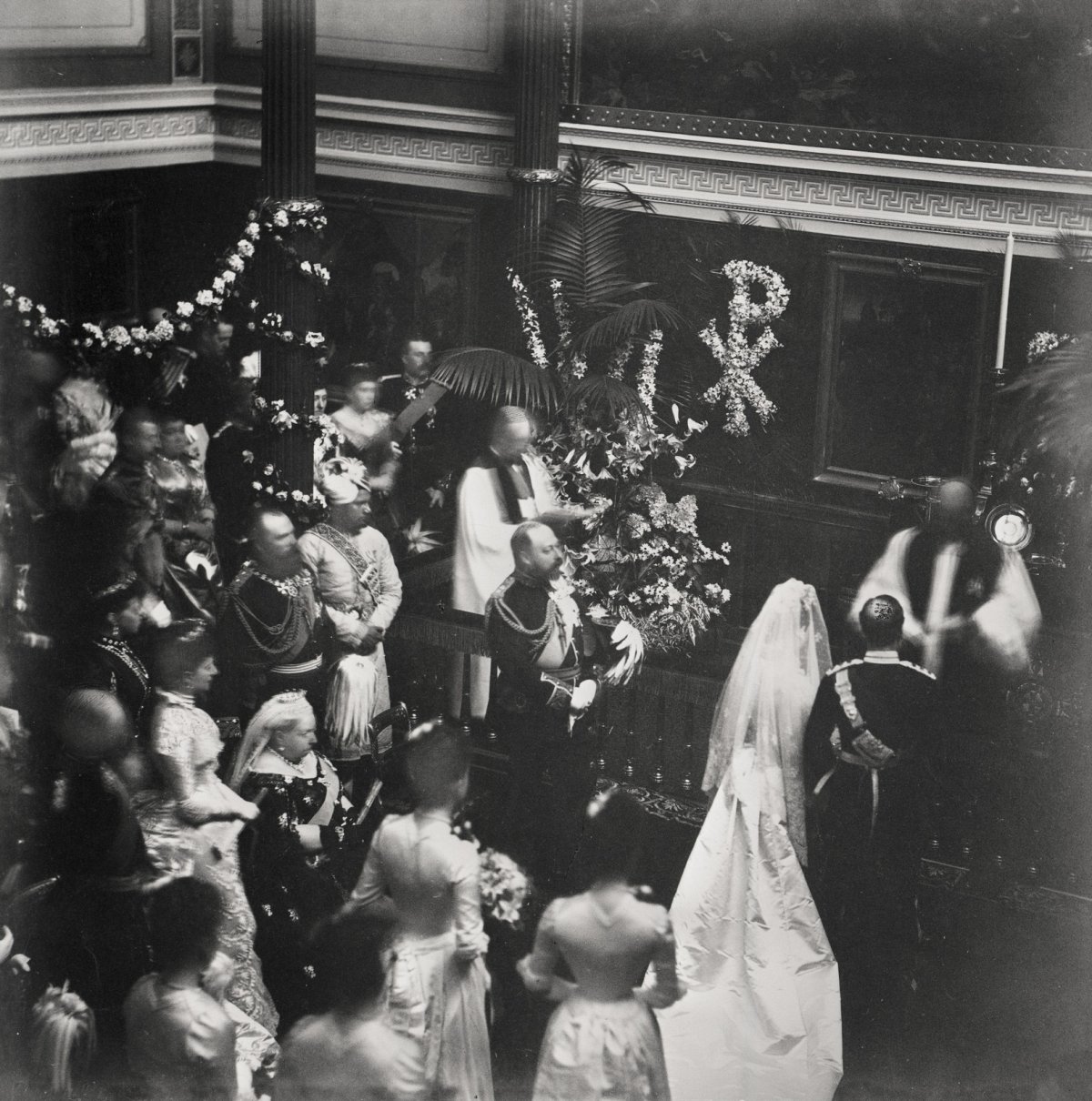
On the morning of July 27, 1889, umbrellas dotted the pavements around Buckingham Palace as rain trickled down from a gray sky. Inside the palace, preparations were underway for the very first royal wedding to be held in the building’s private chapel. After breakfast, Queen Victoria inspected the decorations, and then sent a message to the bride—her granddaughter, 22-year-old Princess Louise of Wales—to tell her that everything was ready for the ceremony.
The skies had begun to clear when Princess Louise left Marlborough House in a glass coach to travel to her wedding. She was accompanied by her father, the Prince of Wales, and smiled and waved happily to the gathered crowds. Inside the palace, she glided down the aisle of the chapel on her father’s arm, with the wedding march from Wagner’s Lohengrin sounding from the organ as she approached her groom, Alexander Duff, the 6th Earl of Fife.
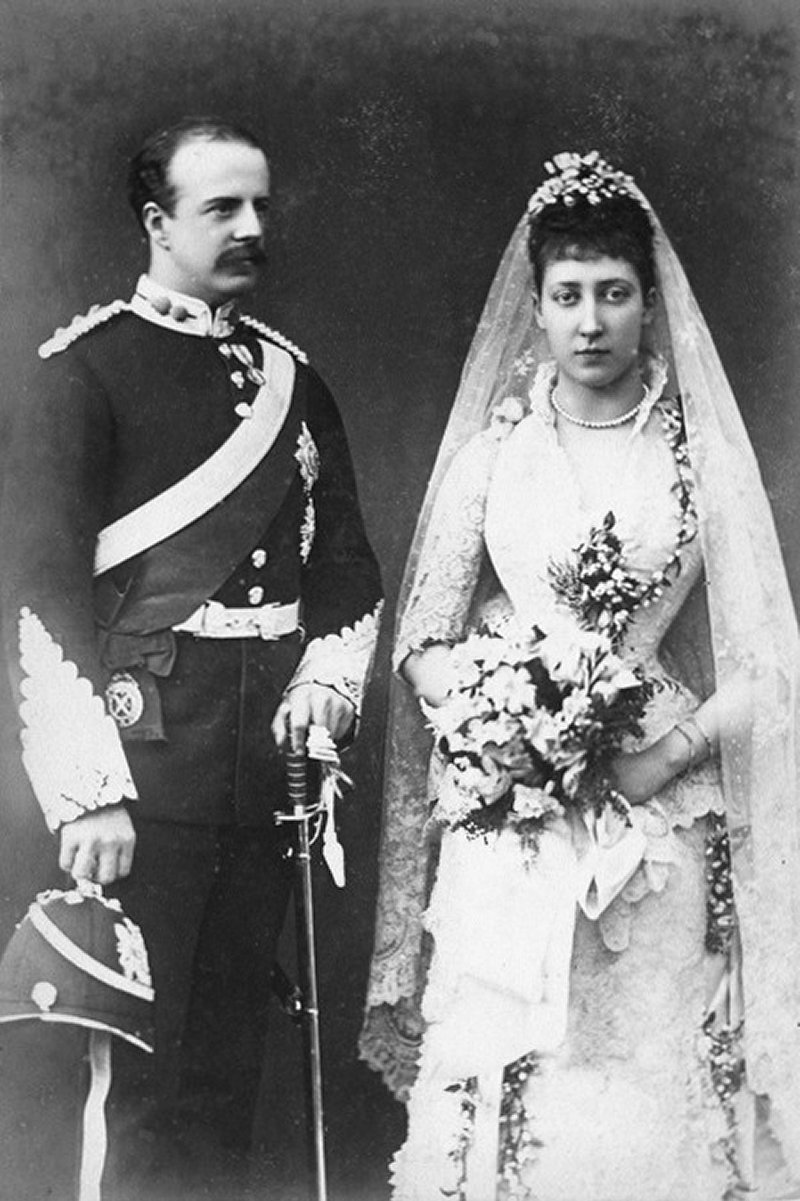
The 39-year-old groom, who was upgraded to the title of Duke of Fife by Queen Victoria on the day of the royal wedding, was a friend of Louise’s father. The princess was quiet and shy, but despite her mother’s efforts to keep her children close to home, she was ready to embark on a life of her own.
Her father wrote to his elder sister, Vicky, revealing that Alexander and Louise had “been devoted to one another for two years, but he was too shy to propose.” The fact that Duff wasn’t royal didn’t seem to bother Bertie, nor did Duff’s not-so-innocent personal reputation. The couple’s engagement had been announced at the end of June, with the wedding taking place just a few weeks later.
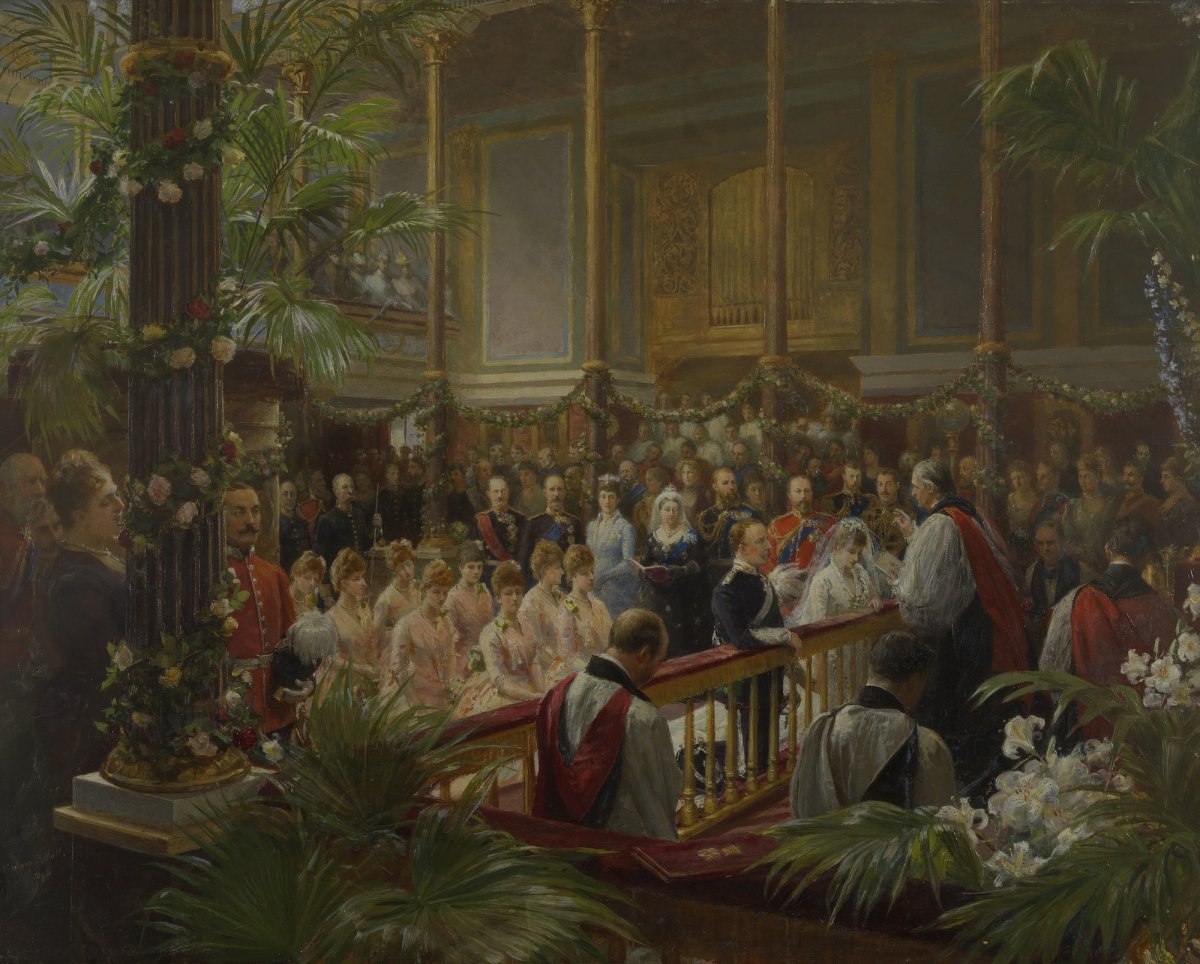
The Archbishop of Canterbury conducted the wedding ceremony inside the palace chapel. Alexander struggled a bit to repeat his wedding vows, and there was some fumbling with the wedding ring, but soon enough the couple were wed and could proceed to a luncheon, also given at the palace by Queen Victoria, before returning to Marlborough House.

Back at the London residence of the Wales family, the dining room was filled to the brim with Louise’s wedding presents. Special guests had been invited to Marlborough House to view the spread, which featured some particularly incredible jewels, including a pair of tiaras. Reporters from newspapers were also admitted so that they could describe the splendor for the wider public.
“Rarely has such a concentrated display of artistic treasures been brought together as that offered to the Princess Louise of Wales and the Duke of Fife on the occasion of their marriage. Lord Fife’s presents to his bride are, to say the least, worthy of the exalted rank of the lady by whom they will be worn,” wrote a report published in the Harrow Gazette.

Fife’s grandest gift to his new wife was “a superb tiara of diamonds, composed of some hundreds of stones, ranging in weight from one carat to ten, the larger being cut on both sides and turning on pivots, so that they will flash with every movement of the head.” The tiara appears to have been constructed using a design dreamed up by the nineteenth-century tiara master Oscar Massin.

A report featured in the Montreal Gazette also enthused over the magnificence of the Fife Tiara: “The tiara was a mass of diamonds, a line of large pear-shaped stones running around its entire front, hanging and shimmering in pear-shaped openings. About these, at the top, was a line of diamond points, also consisting of pear-shaped diamonds. The inverted pendants were surrounded by beautiful and fragile open work, fronted with diamonds, the whole being one of the most artistic and valuable pieces of the kind in all England.”

Princess Louise wore the spectacular Fife Tiara for some of the most important family celebrations of the late Victorian and early Edwardian eras. In July 1893, four years after her own royal wedding, she wore the tiara for the marriage of her brother, the Duke of York, and Princess May of Teck (the future King George V and Queen Mary). Louise is pictured above in the tiara during the celebrations with her mother, the Princess of Wales (who wears her diamond kokoshnik tiara), and her sisters, Victoria and Maud, who were bridesmaids at the wedding.

Princess Louise also posed in the tiara for a memorable “three generations” photograph during the 1893 York wedding celebrations. She’s pictured here alongside her mother, the Princess of Wales, and her maternal grandmother, Queen Louise of Denmark.

Three years later, in July 1896, she brought out the tiara once again for the wedding of her sister, Princess Maud, to their cousin, Prince Carl of Denmark. (He would later be elected King of Norway, reigning as Haakon VII.) Louise is pictured here wearing the Fife Tiara with Princess Victoria (a bridesmaid), Princess Maud, and the Princess of Wales (who wears her wedding gift tiara). In the front row is Louise’s elder daughter, Lady Alexandra, who had just turned five.
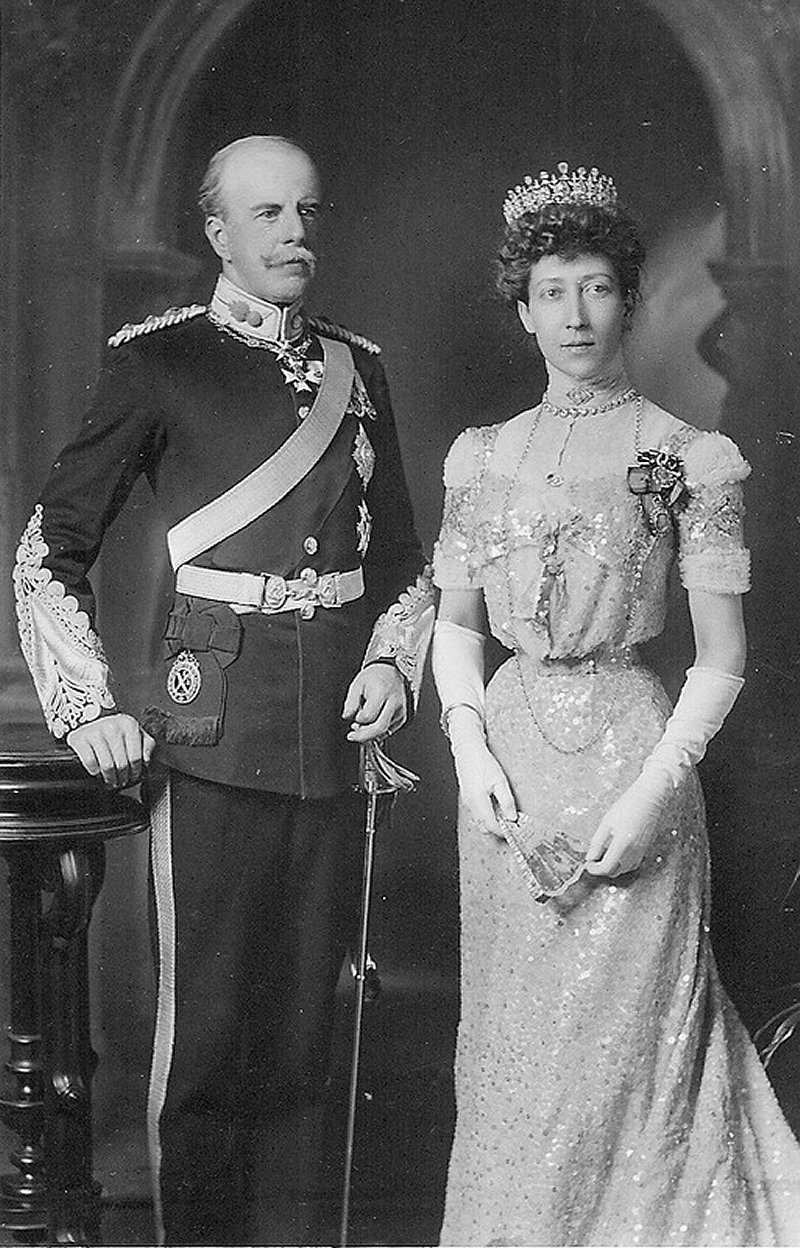
Princess Louise continued to wear the tiara for formal occasions during the reigns of her grandmother, father, and brother. Here, she poses for a formal portrait in the tiara with her husband, the Duke of Fife. The photograph was likely taken around the time of the 1911 coronation, just a few months before Alexander’s untimely death following a terrifying shipwreck in the Mediterranean.

Here, Louise wears the tiara in a portrait that was likely taken in the early years of her widowhood. After Alexander’s death, Louise largely settled into a quiet, private life, until her own passing in January 1931.
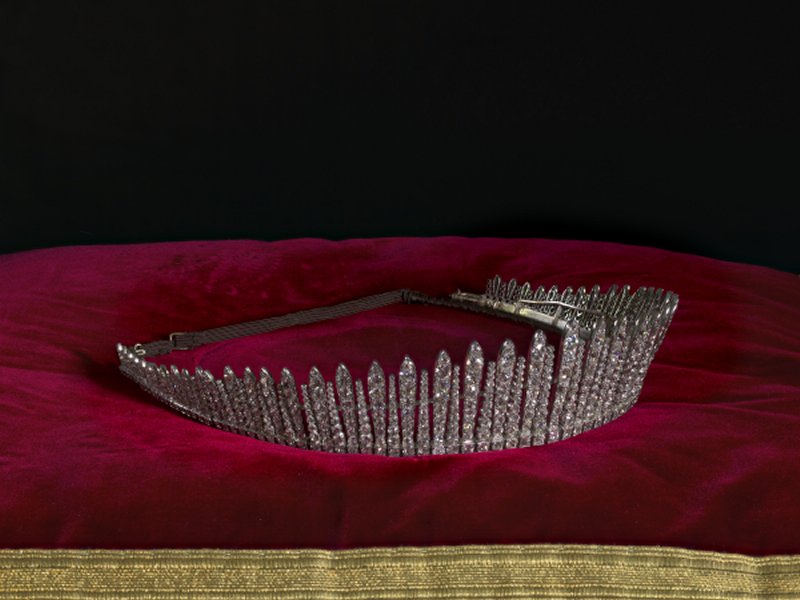
The incredible Fife Tiara was one of two tiaras presented to Louise to celebrate her royal wedding. The other, a diamond fringe, was a gift from her parents, the Prince and Princess of Wales, who would later reign as King Edward VII and Queen Alexandra. The Harrow Gazette‘s report noted, “The parents of the bride, amongst their other presents, give another tiara, of which it can only be said that it equals in quality that which comes from the bridegroom.”
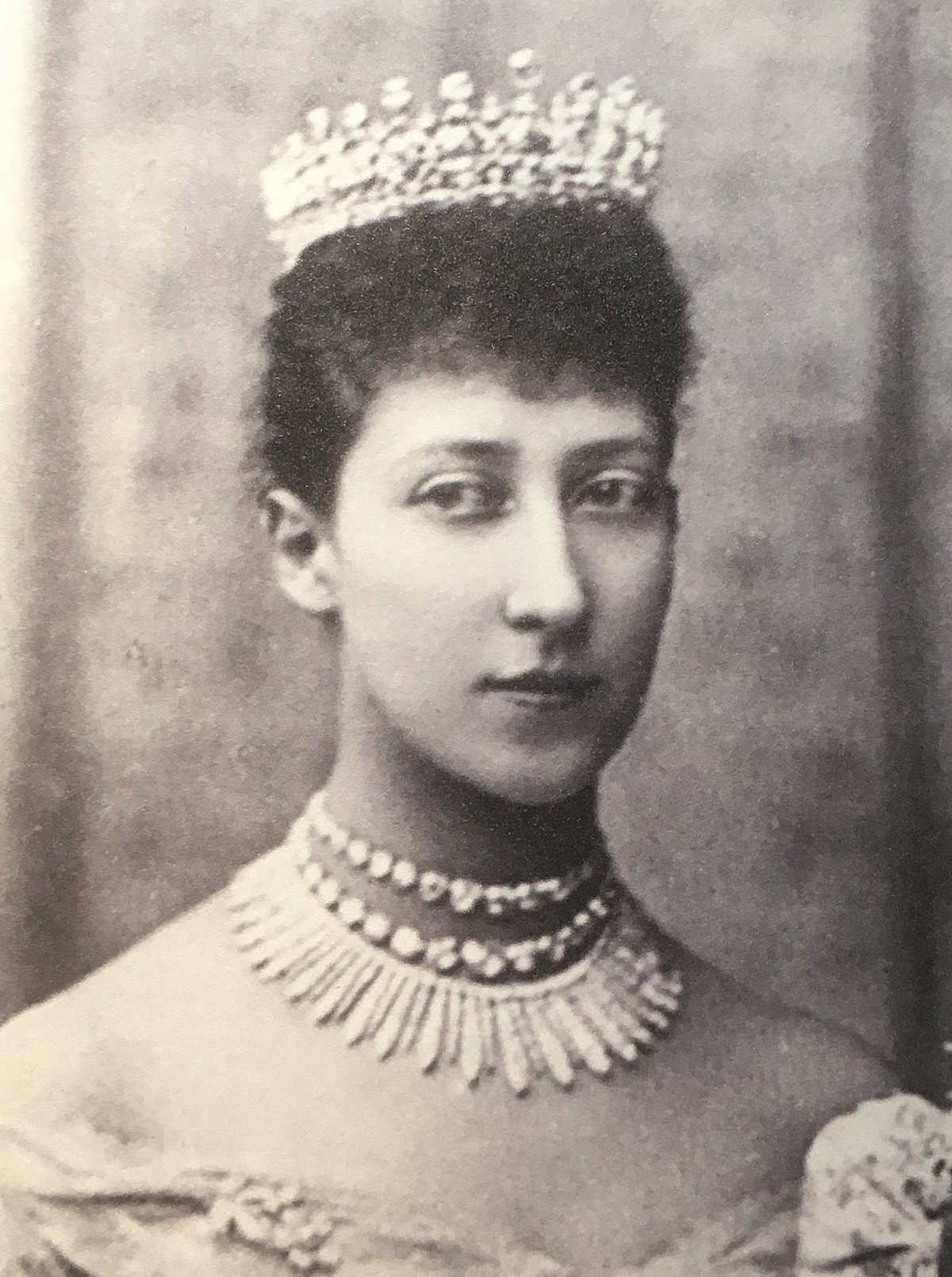
The Morning Post reported, “The Prince and Princess of Wales gave their daughter a magnificent tiara composed of exquisite brilliants set in alternating and graduating rays, nearly two inches in the center to half an inch at the ends; by a simple arrangement it also forms a necklace.” Louise wore the tiara most frequently in its necklace setting. She wore the necklace version, stacked with two diamond necklaces, and the Fife Tiara for the Duke and Duchess of York’s royal wedding in 1893.
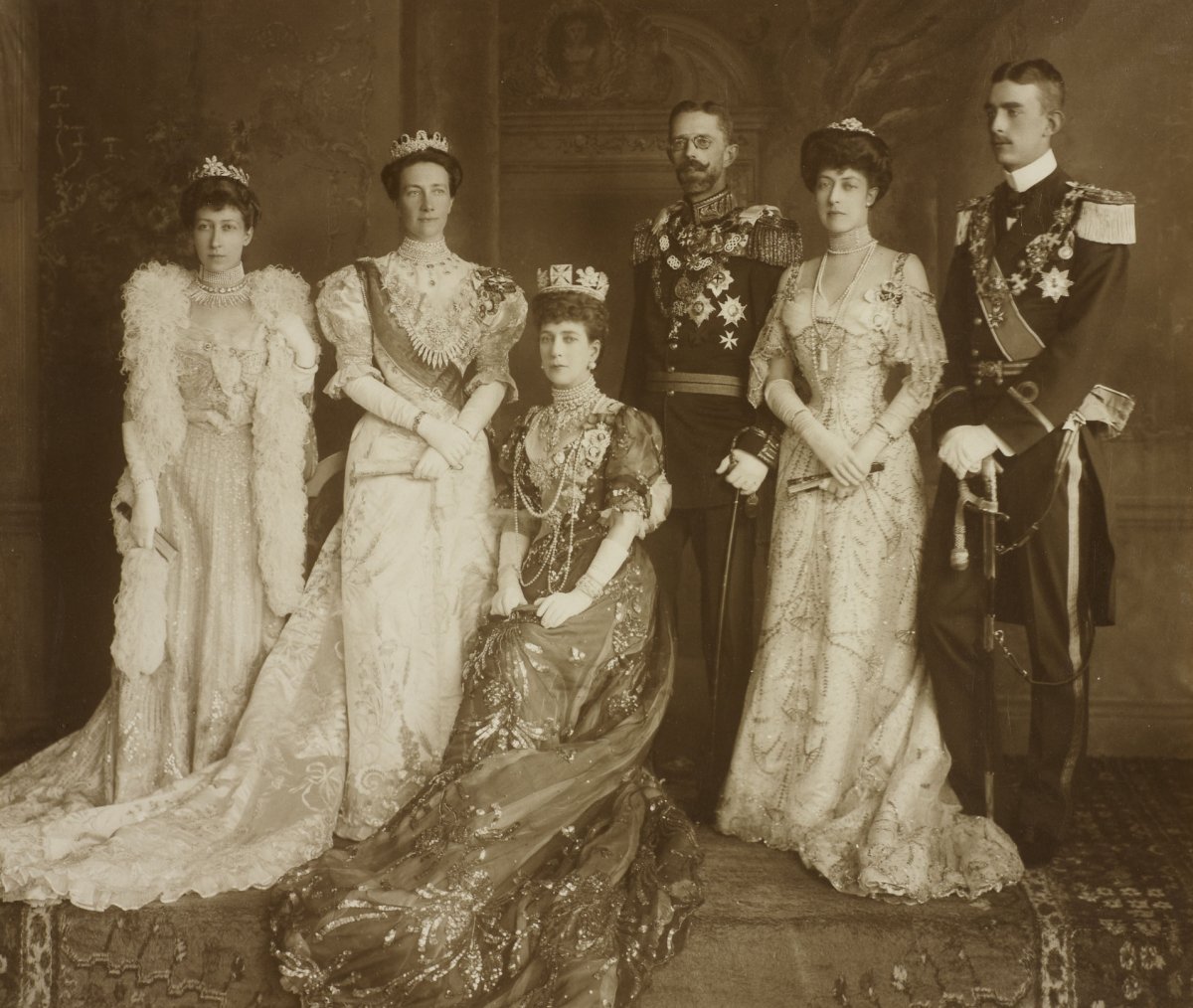
She also wore the necklace setting of the tiara in June 1905 for the wedding of her cousin, Princess Margaret of Connaught, and Prince Gustaf Adolf of Sweden at St. George’s Chapel, Windsor. She’s on the left in this group photograph from the wedding, which also includes the groom’s parents, Crown Prince Gustaf and Crown Princess Victoria (wearing the Leuchtenberg Sapphires), and brother, Prince Wilhelm, and Louise’s mother, Queen Alexandra (wearing the Diamond Diadem), and sister, Princess Victoria. (Princess Maud, whose husband was being suggested to replace the Swedes on the Norwegian throne, tactfully did not attend.)

Louise stacked the fringe necklace with a diamond rivière and a pearl choker necklace for the 1905 wedding. She wore an interesting tiara for the ceremony, made by combining several diamond floral jewelry ornaments from her collection. Those individual pieces were also part of her wedding gift haul. There were rumors several years ago that part of this tiara may have been worn on Downton Abbey, but those suggestions appear to have been largely inaccurate.

Here’s a look at Louise wearing the diamond fringe in its tiara setting, in a portrait taken during the years of her widowhood. The diamond cross she wears was a wedding gift from a committee calling themselves the “Gentlemen of Norfolk.”

While the fates of many pieces of Princess Louise’s jewelry are unknown—with some certainly lost at sea—the two wedding gift tiaras are easy to track down today. They were inherited by Louise’s daughters and stayed with her descendants. Following the death of her grandson, the 3rd Duke of Fife, the Fife Tiara was accepted by the government in lieu of inheritance tax.
Today, the Fife Tiara is displayed alongside the diamond fringe tiara, plus the beautiful diamond and emerald suite that belonged to Queen Victoria, at Kensington Palace. I have a feeling more than a few of you have been able to visit and see it in person!
Leave a Reply
You must be logged in to post a comment.